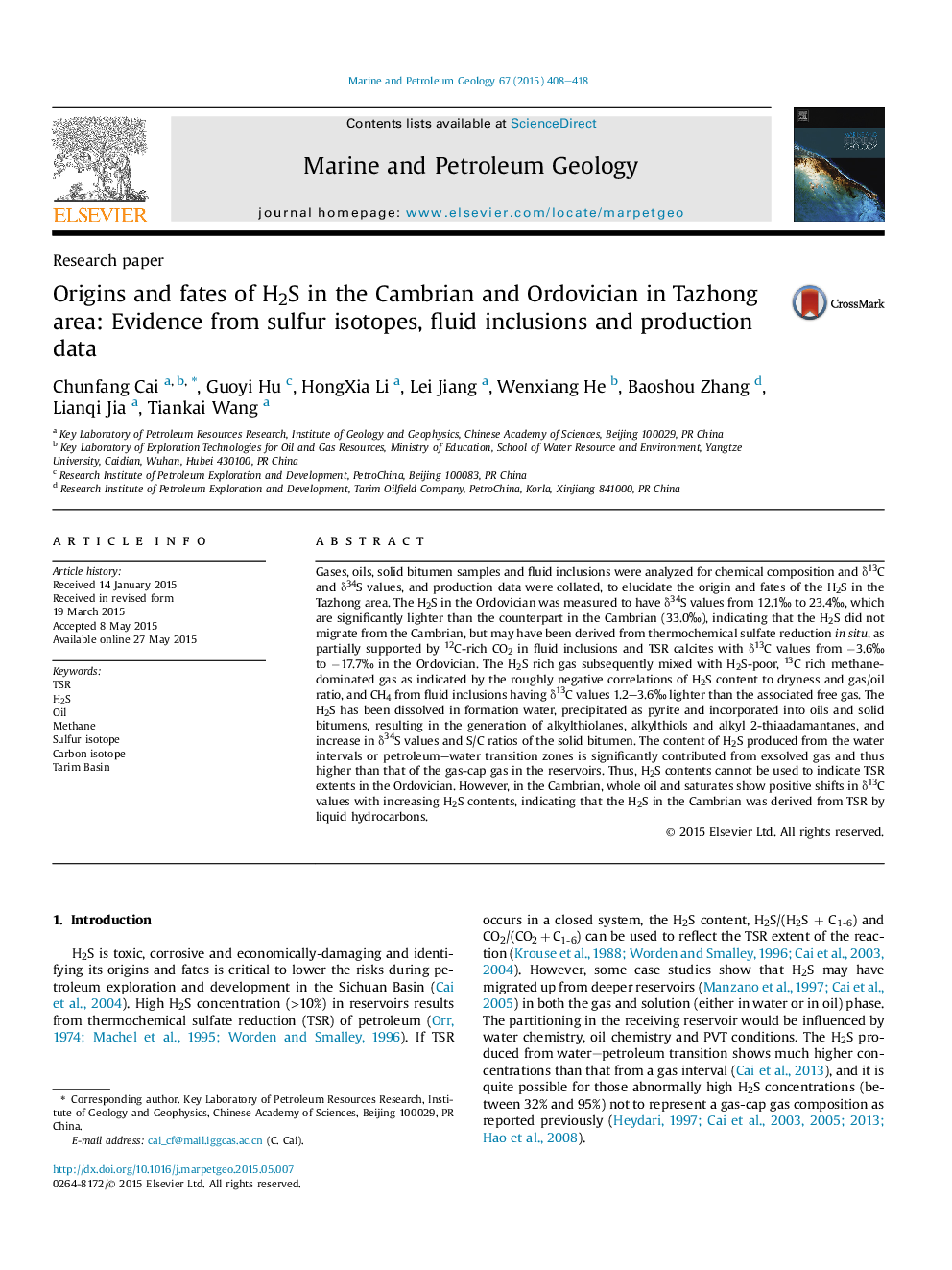| کد مقاله | کد نشریه | سال انتشار | مقاله انگلیسی | نسخه تمام متن |
|---|---|---|---|---|
| 6434935 | 1637159 | 2015 | 11 صفحه PDF | دانلود رایگان |

- The H2S was derived from TSR, and diluted by late charged H2S-poor dry gas.
- Significant amounts of H2S were contributed from exsolution from water during production.
- A significant amount of H2S was incorporated into oils and solid bitumen.
- H2S concentrations cannot reflect TSR degrees in the area.
Gases, oils, solid bitumen samples and fluid inclusions were analyzed for chemical composition and δ13C and δ34S values, and production data were collated, to elucidate the origin and fates of the H2S in the Tazhong area. The H2S in the Ordovician was measured to have δ34S values from 12.1â° to 23.4â°, which are significantly lighter than the counterpart in the Cambrian (33.0â°), indicating that the H2S did not migrate from the Cambrian, but may have been derived from thermochemical sulfate reduction in situ, as partially supported by 12C-rich CO2 in fluid inclusions and TSR calcites with δ13C values from â3.6â° to â17.7â° in the Ordovician. The H2S rich gas subsequently mixed with H2S-poor, 13C rich methane-dominated gas as indicated by the roughly negative correlations of H2S content to dryness and gas/oil ratio, and CH4 from fluid inclusions having δ13C values 1.2-3.6â° lighter than the associated free gas. The H2S has been dissolved in formation water, precipitated as pyrite and incorporated into oils and solid bitumens, resulting in the generation of alkylthiolanes, alkylthiols and alkyl 2-thiaadamantanes, and increase in δ34S values and S/C ratios of the solid bitumen. The content of H2S produced from the water intervals or petroleum-water transition zones is significantly contributed from exsolved gas and thus higher than that of the gas-cap gas in the reservoirs. Thus, H2S contents cannot be used to indicate TSR extents in the Ordovician. However, in the Cambrian, whole oil and saturates show positive shifts in δ13C values with increasing H2S contents, indicating that the H2S in the Cambrian was derived from TSR by liquid hydrocarbons.
The H2S in the Ordovician shows decrease with increasing dryness coefficient, and is explained as dilution by H2S-poor dry gas.
Journal: Marine and Petroleum Geology - Volume 67, November 2015, Pages 408-418